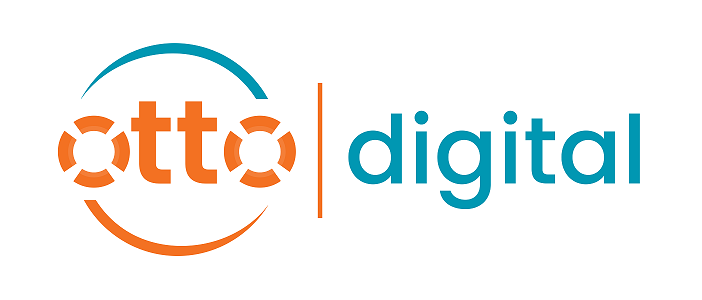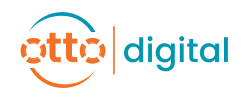The Custom Software Development Process Explained
 In today’s fast-paced digital economy, off-the-shelf software doesn’t always make the cut. Whether you’re running a local tradie business or managing a nationwide enterprise, custom software development is the smart way to build tech that’s aligned with your unique goals. But let’s face it, software development can seem like a black box if you’re not in the industry. This blog is your insider’s guide to the custom software development process, broken down in plain English with a proper Aussie tone. We’ll walk through each stage, from initial discovery to ongoing support, giving you the clarity you need before diving into your next software project.
In today’s fast-paced digital economy, off-the-shelf software doesn’t always make the cut. Whether you’re running a local tradie business or managing a nationwide enterprise, custom software development is the smart way to build tech that’s aligned with your unique goals. But let’s face it, software development can seem like a black box if you’re not in the industry. This blog is your insider’s guide to the custom software development process, broken down in plain English with a proper Aussie tone. We’ll walk through each stage, from initial discovery to ongoing support, giving you the clarity you need before diving into your next software project. What Is Custom Software Development?
Custom software development is the process of designing, building, testing, and deploying software that is tailored to your specific business needs. Unlike commercial off-the-shelf (COTS) solutions, custom software is built from scratch or modified extensively to suit your workflow, customer base, data models, or compliance requirements. Think of it like getting a bespoke suit rather than grabbing something generic off the rack, it fits better, looks sharper, and performs exactly the way you want.Why Businesses Choose Custom Software
There are plenty of reasons why businesses across Australia opt for tailor-made digital solutions. Some of the most common include:- Efficiency: Automating manual tasks and eliminating duplicated effort
- Scalability: Creating systems that grow with your business
- Security: Building in security features tailored to your industry
- Integration: Connecting smoothly with your existing tools and software
- Competitive Advantage: Offering functionality that your competitors don’t have
The 7 Stages of the Custom Software Development Process
Let’s explore each stage of the development journey, the way it’s commonly handled by Australian software companies.1. Discovery & Requirement Gathering
Every successful software project starts with understanding your business goals. This phase typically includes:- Workshops or meetings with key stakeholders
- Gathering functional and non-functional requirements
- Mapping your business processes
- Conducting feasibility studies and initial planning
2. Planning & Proposal
With the requirements clear, the development team begins planning. Key deliverables:- A formal proposal with project timelines and costs
- Technology stack selection (such as .NET, React, AWS)
- Selection of development methodology (Agile, Waterfall, or Hybrid)
- Risk assessments and mitigation strategies
3. UI/UX Design
This phase shapes how your software looks and feels. The design process typically involves:- Creating wireframes and interface layouts
- Developing high-fidelity mockups
- Mapping user journeys and flows
- Building interactive prototypes
4. Software Development (Coding Phase)
This is the core build stage where your application comes to life. Typical activities include:- Front-end coding (interface and user interactions)
- Back-end coding (logic, data, integrations)
- API and system integrations
- Source control and code documentation
5. Quality Assurance (QA) & Testing
Testing is essential to ensure performance, stability, and security. Testing types include:- Unit testing (individual functions)
- System and integration testing
- User Acceptance Testing (UAT)
- Load, stress, and performance testing
6. Deployment & Go Live
After thorough testing, it’s time to go live. Deployment activities include:- Migrating the software to production servers
- Hosting setup (often via local providers or AWS Sydney)
- Data import and final system checks
- Soft launch or full-scale public release
7. Support & Maintenance
Custom software needs to be maintained to ensure long-term performance. Ongoing services typically include:- Fixing bugs
- System monitoring and error reporting
- Performance tuning
- Rolling out new features
- Patching security vulnerabilities
Key Players in a Software Development Team
To deliver a successful product, most Australian software teams include:- Project Manager – Oversees timelines and client communications
- Business Analyst – Translates business needs into software requirements
- UI/UX Designer – Designs the visual and interactive elements
- Developers – Build and test the code
- QA Engineers – Conduct testing and quality checks
- DevOps Engineers – Manage deployment and server infrastructure
How Long Does Custom Software Development Take?
The timeline varies based on project size and complexity. Here’s a general guide:| Project Type | Timeframe |
|---|---|
| Small (MVP or Prototype) | 4–8 weeks |
| Medium (Web App/CRM) | 3–6 months |
| Large (ERP or SaaS) | 6–12+ months |
What Does It Cost in Australia?
Pricing in the local market is generally broken down as follows:- Small projects: $5,000 – $25,000
- Mid-sized applications: $30,000 – $100,000
- Large, enterprise-scale systems: $100,000 – $500,000+
Custom vs Off-the-Shelf: Which Is Better?
| Feature | Custom Software | Off-the-Shelf Software |
| Tailored Features | Fully customisable | Limited options |
| Cost Over Time | Higher upfront, better ROI | Lower upfront, ongoing licence fees |
| Deployment Speed | Slower initial build | Ready to use |
| Scalability | Grows with your business | Fixed limits |
| Support | Dedicated local support | Shared/global support |
Choosing the Right Aussie Software Partner
When selecting a development partner, look for:- A local presence in your region
- A strong portfolio and proven experience
- Clear communication and regular updates
- An understanding of your business model
- Post-launch support and ongoing services
Key Takeaways
Custom software development gives Australian businesses a flexible, scalable solution tailored to their unique needs. The process involves key stages like discovery, planning, design, development, testing, deployment, and support—ensuring the final product fits your operations perfectly. With Agile methods common in Australia, local teams can quickly adapt to feedback and changes. While custom builds may require a higher upfront investment, they offer long-term value through improved efficiency, better integration, and competitive advantage. Choosing a reliable Aussie development partner is key to achieving lasting digital success.Contact us.Frequently Asked Questions
How do I know if I need custom software?
If your current tools don’t support your processes or you’re constantly juggling spreadsheets, it’s time to explore custom software.
Can I integrate custom software with my existing systems?
Absolutely. Custom applications are designed to integrate with CRMs, ERPs, accounting platforms, and other tools using APIs or direct connections.
Is custom software secure?
Yes—when built by professional developers. Australian teams follow strict security protocols, including encryption and compliance with the Privacy Act.
What industries benefit most from custom software?
Nearly every industry can benefit, including healthcare, construction, logistics, education, real estate, and agriculture.
Will I own the code?
In most cases, yes—if agreed upon in your contract. Always confirm code ownership before development begins.


